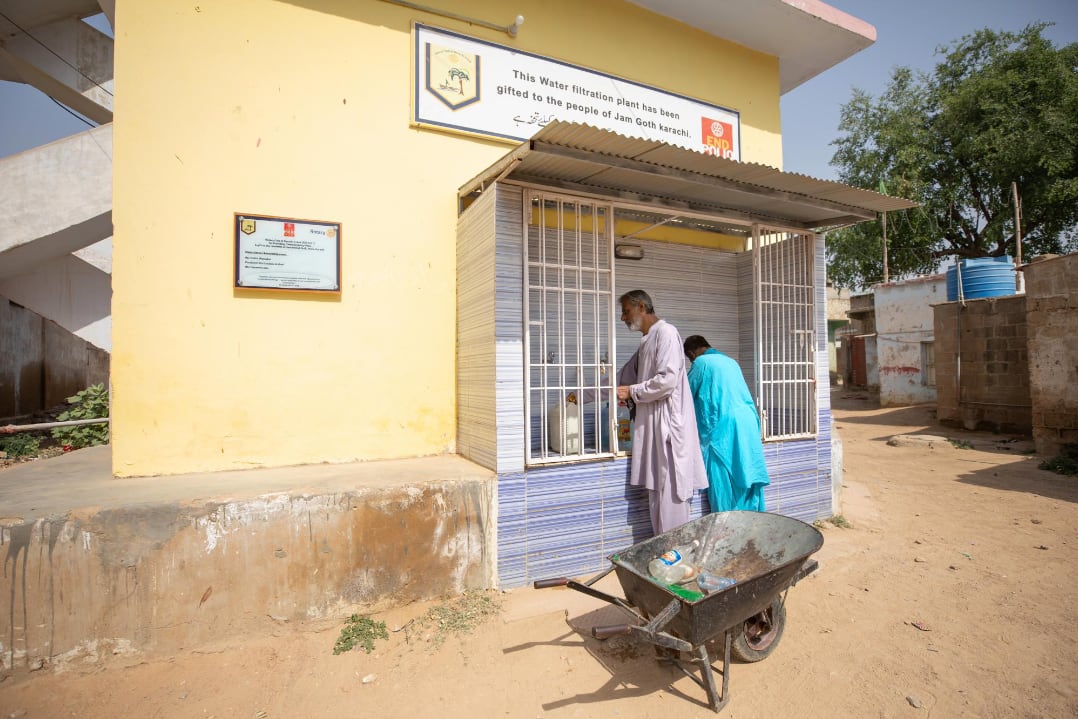
by Diana Schoberg
Khadim Solangi Goth, a community on the outskirts of Karachi, Pakistan, sits in one of the last remaining polio reservoirs on the planet. More than 40,000 people live in improvised dwellings made of earth or other found materials. For some, a cotton sheet is all that protects them from the hot sun and monsoon rains. “The poorest of the poor are living in this area,” says Asher Ali, the project manager for the Pakistan PolioPlus Committee.
Polio is especially resilient in this community, which has been one of the most resistant to eradication efforts; the Global Polio Eradication Initiative (GPEI) has designated Khadim Solangi Goth one of its highest-priority areas. And the Pakistan Polio Eradication Initiative classifies Gadap Union Council 4, the administrative district that the community is a part of, as “super high risk.”
What makes polio thrive in this place? The piles of trash and open sewers are one reason; the poliovirus gets transmitted through contaminated water. But another major factor is the area’s low vaccination rate. In a community whose basic needs aren’t met, residents see the polio vaccine as a low priority. “The refusals are not for the sake of religion but because civic amenities are missing,” says Aziz Memon, chair of the Pakistan PolioPlus Committee. “They ask us, ‘What are you doing here? You come again and again and again to give us polio drops. You never tell us how you’re going to help us with electricity, roads, or clean water.’”